ARFF Daily News
Published on:
Monday the 17th of March, 2025 – Lá Fhéile Pádraig sona duit!
We start the new week with sad news from Miami about the passing of MDFR Captain Bill Gustin, who amongst other titles was an editor and technical advisor for Fire Engineering Magazine and a founding member of the FEMA Urban Search and Rescue Working Group who played a critical role in shaping the standards and practices that keep firefighters safe today.
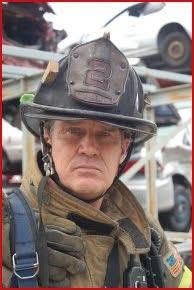
As Chief Billy Goldfeder of “The Secret List” states, “Captain Gustin was not only a mentor and teacher but also a hero. He was recognized by those in MDFR who exemplify his dedication to continuous learning and excellence. Capt. Gustin embodied the best of the fire service. He was a leader, a coach, a mentor, and above all, a friend. His legacy lives on in the thousands of firefighters he trained, the countless lives he touched, and the fire service he so dearly loved and transformed.”
May He Rest in Peace
Here are the stories…
Be safe out there, a lot of amateurs out on the roads today!
Slán abhaile!
Tom
REST IN PEACE CAPTAIN BILL GUSTIN (The Secret List)
All,
horrible and deeply sad news from Florida this morning. Here is the message from Miami-Dade Fire Rescue, with a brief personal comment below:
“It is with profound sorrow that Miami-Dade Fire Rescue (#MDFR) announces the untimely passing of Captain William “Bill” Gustin. A nearly 50-year veteran of the fire service, his legacy has left an indelible mark on firefighters across the county and around the world. His passing is a tremendous loss—not only for MDFR but also for the countless individuals he mentored, inspired, and shaped throughout his extraordinary career.”
“Captain Gustin dedicated his life to the fire service, beginning his journey in 1973 as a volunteer firefighter in the Chicago area. As a third-generation firefighter, he carried forward the proud legacy of his father and grandfather, who both served as officers in the Chicago Fire Department. In 1978, he joined MDFR, rising through the ranks to become a Lieutenant in 1983 and a Captain in 1986. For over thirty years, he led Engine 2—one of the busiest companies in the nation—with unwavering dedication and expertise.”
“Beyond his leadership on the fireground, Captain Gustin was a pillar of education and training in the fire service. He was a lead instructor for MDFR’s Officer Development Program, an educator at Miami-Dade College, and a driving force behind firefighter training programs across the United States and Canada. His expertise extended beyond our borders.”
“His influence stretched far beyond his immediate colleagues—he was a guiding light in the fire service community. As a contributing editor and technical advisor for Fire Engineering Magazine and a founding member of the FEMA Urban Search and Rescue Working Group, he played a critical role in shaping the standards and practices that keep firefighters safe today.”
“Captain Gustin was not only a mentor and teacher but also a hero. He was recognized by those in MDFR who exemplify his dedication to continuous learning and excellence. Capt. Gustin embodied the best of the fire service. He was a leader, a coach, a mentor, and above all, a friend. His legacy lives on in the thousands of firefighters he trained, the countless lives he touched, and the fire service he so dearly loved and transformed.”
“People who care are ready to help. No one should feel like they have to face their battles alone.”
“His loss leaves a void that cannot be filled, but his impact will be felt for generations. Let us honor his memory by carrying forward his passion for learning, dedication to safety, and deep love for the fire service.”
“Rest in peace, Captain Gustin. Your legacy will endure in every firefighter you trained, every life you touched, and every lesson you imparted. The fire service is stronger because of you, and your impact will resonate for years to come.” End.
On a personal note, I’ve been fortunate to be friends with Bill for many year…and my favorite part was when he would text me the following:
“Billy G, it’s your other Billy G-you have time for a call?”
I always had time, because any time with Bill Gustin was a gift. Bill defined what an “all in” “ate up” “gung ho” “night and day” Firefighter is, as well as an awesome human, brother, father and grandfather.
What a wonderful man who we will all sorely miss.
MORE FROM FIRE ENGINEERING (Videos)
FDIC International 2019: Lifetime Achievement Award
Bill Gustin, Longtime Fire Engineering Technical Editor, Passes Away
Go to 1:10:
Instructor of the Year FDIC General Session
Rest In Peace.
Take Care. Be Careful. Pass It On.
BillyG
The Secret List 3-16-2025-1300 Hours
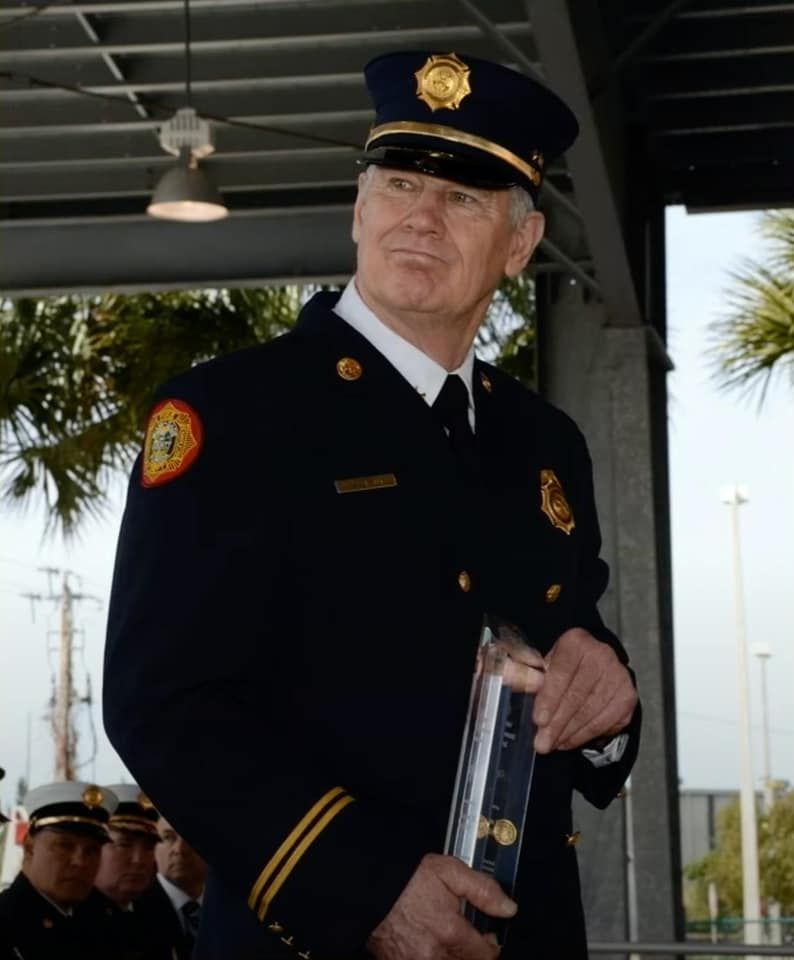
San Rafael fire destroys building at airport
By Marin Independent Journal
A fire at the San Rafael Airport along Smith Ranch Road gutted a 2,000-square-foot building on Sunday, the fire department reported.
The fire was reported at about 4:50 a.m. in a structure “used as a machine shop for repairs and fabrication of parts and equipment,” the department said. It contained combustible liquids.
The blaze destroyed the building, but fire crews prevented it from spreading to other structures nearby. The fire damaged no airplanes and caused no injuries.
The cause is under investigation. A hazardous materials team was called in to contain and clean up the flammable liquids.
https://www.marinij.com/2025/03/16/san-rafael-fire-destroys-building-at-airport/
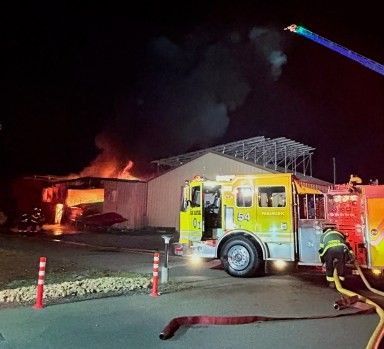
Plane hits bird, makes emergency landing in Van Nuys
By FOX 11 Digital Team
LOS ANGELES - A plane with three people aboard was forced to make an emergency landing Saturday at Van Nuys Airport after striking a bird.
What we know:
A Barron B55 twin-engine aircraft struck the bird while flying through the Newhall Pass around 9 p.m.
The plane suffered significant damage. The impact shattered the windshield, leaving the co-pilot injured.
The co-pilot was treated for a head wound and transported to the hospital.
The plane was returning from a day trip to Las Vegas when the bird strike happened.
The pilot described it as a teaching experience.
What they're saying:
"I call ‘mayday.’ I landed everything smooth. When I started, I cannot hear them. So my partner got all blood… and maybe just scratch in the chin. But after we landed, we just realized that it was a bird, and then it stuck on the ceiling there. So pretty big bird, I believe. Yeah. It's so dangerous at night and we cannot see anything," said co-pilot Gma Goeyardi.
https://www.foxla.com/news/plane-hits-bird-makes-emergency-landing-van-nuys

Fatal helicopter crash in Pittsylvania County
by: Rhian Lowndes
UPDATE 4:01 P.M. 3/16/25 PITTSYLVANIA COUNTY, Va. (WFXR) – – Virginia State Police have confirmed the identity of the pilot killed in Saturday’s crash.
72-year-old Paul D. Jackson died after the helicopter came down in Pittsylvania County. NTSB says he was flying a Robinson R44 helicopter.
NTSB was on the scene Sunday.
PITTSYLVANIA COUNTY, Va. (WFXR) – Virginia State Police says the pilot is dead after a helicopter crash in Pittsylvania County.
Reports that the helicopter came down in the 2000 block of Campview Road came in around 3 p.m., according to VSP.
They’re waiting to alert the next of kin before identifying the pilot.
The FAA and NTSB have been notified.
https://www.wfxrtv.com/news/local-news/fatal-helicopter-crash-in-pittsylvania-county/

Pilot feels lucky to be alive after crashing into Modesto Reservoir
By Esteban Reynoso
MODESTO – The pilot of a helicopter that crashed into the Modesto Reservoir on Saturday says he feels lucky to be alive.
He has minor injuries, but his spirits were still high as the helicopter was now being pulled from the water.
The pilot says he was with a business partner when he hit the water and took quick action to get them to safety.
An unusual sight to see. A submerged helicopter was pulled out of this Modesto Reservoir on Sunday afternoon.
"To me, this is a gift from God," said Bob Campana.
Campana was the pilot who survived the crash into the reservoir.
Incredibly, he was able to swim away from the wreckage. His passenger also survived with more serious injuries.
"The water was very mirror-like and my depth perception got a little off and unfortunately, drove it into the water. The windshield blew out," he recalls. "A floatation device popped up, he had broken his leg he was in pain, and we were floating as you can see about 150 feet offshore."
And it was sinking fast.
"When I did the harness, the water was at my shoulders and the helicopter was sinking, it was instantaneous," said Campana.
With his passenger unable to swim, Campana had to get them both out of the water.
"At that point, I had to swim pulling him, a 71-year-old guy, I don't even know how the hell it happened. Then I transported him to shore to save him," he said. "Hands were cut up a little bit."
But despite the cuts and bruises, Campana is feeling good.
"I'm in good spirits because I'm with my family, I know I'm going to be with my family moving forward," he said.
Campana was asked whether this has grounded his pilot passion.
"Yeah, oh I'll still continue to fly," he said.
Campana says his passenger is set to be released from the hospital on Sunday.
The helicopter is being taken to the Stanislaus County Sheriff's Office as evidence while the FAA continues its investigation.
https://www.cbsnews.com/sacramento/news/modesto-reservoir-helicopter-pilot-speaks/
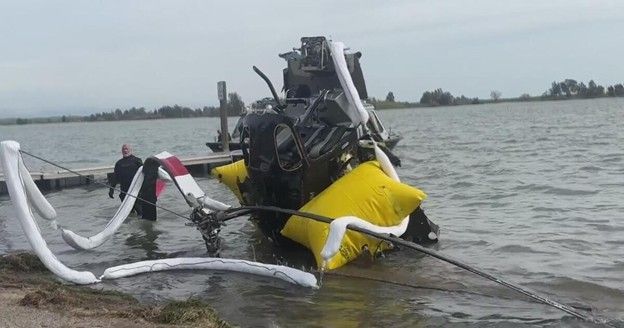
No survivors found after private plane crashes near Greenville airport, NCSHP says
GREENVILLE, N.C. (WTVD) -- (UPDATE): The two victims in the fatal plane crash in Greenville were identified, ABC affiliate WCTI reported.
On Sunday, a Greenville dental office identified them as Dr. Mark Bowman and his wife Robin on social media. Bowman was with the practice for over 30 years.
Officials have not released the identities of those on board as of Sunday morning.
Below is a previous report.
A private plane crashed Friday morning in Greenville.
It happened near Pitt-Greenville Airport in the area of North Memorial Drive and Belvoir Road around 7:50 a.m.
During a news conference Friday, North Carolina State Highway Patrol Trooper Rico Stephens said no survivors were found. They are in the process of investigating the scene and notifying the next of kin.
FAA officials in a statement said it was a Beechcraft Bonanza plane, and two people were on board.
Their identities have not been released.
No one on the ground was injured.
Greenville Police Department said that police and fire crews are on the scene of the crash. North Memorial is expected to be closed for the rest of the day.
https://abc11.com/post/greenville-plane-crash-private-plane-crashes-near-pitt-greenville-airport-ncshp-no-survivors/16022128/
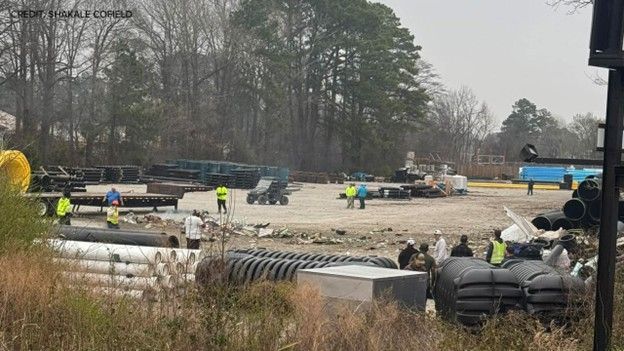
Body of pilot recovered from helicopter crash at Mogadore Reservoir in Portage County
By: Drew Scofield , Courtney Shaw
SUFFIELD TOWNSHIP, Ohio — Multiple police and civilian agencies responded to a deadly helicopter crash at the Mogadore Reservoir in Portage County Friday morning.
Suffield Township Fire Chief Bob Rasnick said his department was notified about the crash at 7:11 a.m.
The fire department contacted the Portage County Water Rescue Team, Hazmat crews, the Portage County Emergency Management Agency, the sheriff's office, and the Ohio State Highway Patrol.
Rasnick called the situation a "recovery mission" at this point.
"We have recovered one body. We're looking to make absolutely sure there's not anyone else in the area," Rasnick said.
During a noon update, Rasnick said the body was that of the pilot, 52-year-old Anthony Jones, of North Royalton. He was flying out of Medina. First responders do not believe anyone else was aboard.
The helicopter was found 22 feet under water. Recovery of the helicopter will take several days.
According to the FAA, the aircraft was a Schweizer 269C helicopter.
Rasnick said witnesses in a boat saw the helicopter fly into an Ohio Edison high-tension wire and crash into the water.
The reservoir is not a drinking water supply, so there is no concern about drinking water contamination. It was initially used to help cool the factories in Akron, and it is currently used for recreation.
"We conducted a dive rescue operation ... There was some leakage from the helicopter, so the Hazmat team —the EPA is here as well — we have isolated and boomed the area to protect the water in this area so there's no danger of it running off and killing wildlife," Rasnick said. "We've mitigated that situation as well."
Local authorities are waiting on the NTSB and the FAA to arrive. The scene will be turned over to those federal agencies.
The Water Rescue Team has a device that scans under the water, Rasnick said, and it detected something and is working to ensure it's not someone else.
"We don't believe that it is," he said. "Not sure; we are going to make sure."
Ohio Edison also responded to the scene to remove the top static wire, which doesn't carry power. That line fell on other power wires but has been safely taken care of. Ohio Edison crews are doing additional grounding work on nearby towers to ensure everything in the area is safe, Rasnick said.

First responders hold disaster response training at Daytona Beach International Airport
By James Tutten, WFTV.com
DAYTONA BEACH, Fla. — First responders from around Central Florida recently came together to prepare for possible worst-case scenarios.
Crews gathered to train for several disaster situations at the Daytona Beach International Airport.
Daytona Beach firefighters put out a fake plane crash and rescued volunteer actors at the airport.
More than three dozen agencies were supporting the drill including Volusia County Emergency Management.
Airport officials said any disaster at Daytona International would require a large response.
Firefighters say the training was a great opportunity for them to test their skills before a real-world disaster.
Over 90 volunteers from the University of Central Florida’s nursing program and Embry Riddle served as victims for the exercise.
https://www.wftv.com/news/local/first-responders-hold-disaster-response-training-daytona-beach-international-airport/X36MMOKG65EDXO72WSGEU63XYE/
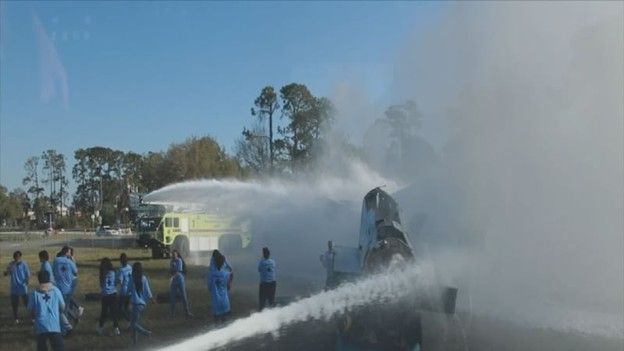
‘I thought we were going to die’: Florida woman recalls escaping burning plane in Denver
By Georgia McCarthur, WFLA
HILLSBOROUGH COUNTY, Fla. —
A terrifying scene unfolded as an American Airlines flight erupted in flames after landing in Denver.
A Tampa Bay woman who was on board American Airlines flight 1006 from Colorado Springs to Dallas described the chaos, fear and the desperate fight to escape.
“I was extremely nervous and scared, and I really thought that the plane was going to blow up and we were going to die,” passenger Marisol Cohen said.
Cohen said the plane was already in the air when the flight attendant made an alarming announcement.
“We were having some rattling in the engine,” Cohen said. “So they were going to divert the flight to Denver so that they can get a new plane or fix the rattling.”
But as soon as the plane touched down, chaos erupted.
“Someone in the plane screamed fire, which was the worst thing that could have happened because everybody lost control,” Cohen said.
In seconds, thick smoke-filled cabin.
“We’re trapped there as we see the flames just billowing and the windows are melting, we’re trapped,” Cohen recalled.
Many passengers scrambled to the emergency exit, but Cohen felt some seated in that row weren’t prepared to act.
“The regulations that they have to sit an emergency exit, I think we really need to rethink that,” she said.
Cohen said flight attendants did their best for the back and front of the plane. But in the middle, where she was, people were stuck. She managed to get to the wing, then a stranger on the ground offered to help.
“It was a tall gentleman that just looked up at us and said, ‘Jump, I got you,’ and we jumped,” Cohen said.
American Airlines issued the following statement on the incident:
"After landing safely and taxiing to the gate at Denver International Airport (DEN), American Airlines Flight 1006 experienced an engine-related issue. The 172 customers and six crew members deplaned and are being relocated to the terminal. We thank our crew members, DEN team and first responders for their quick and decisive action with the safety of everyone on board and on the ground as the priority."
Cohen suffered a minor cut while jumping from the wing, but she said the emotional scars from this flight will last much longer.
She hopes this experience leads to changes in emergency procedures, especially for those seated in emergency exit rows.
https://www.wesh.com/article/florida-woman-recalls-escaping-burning-plane-denver/64204648
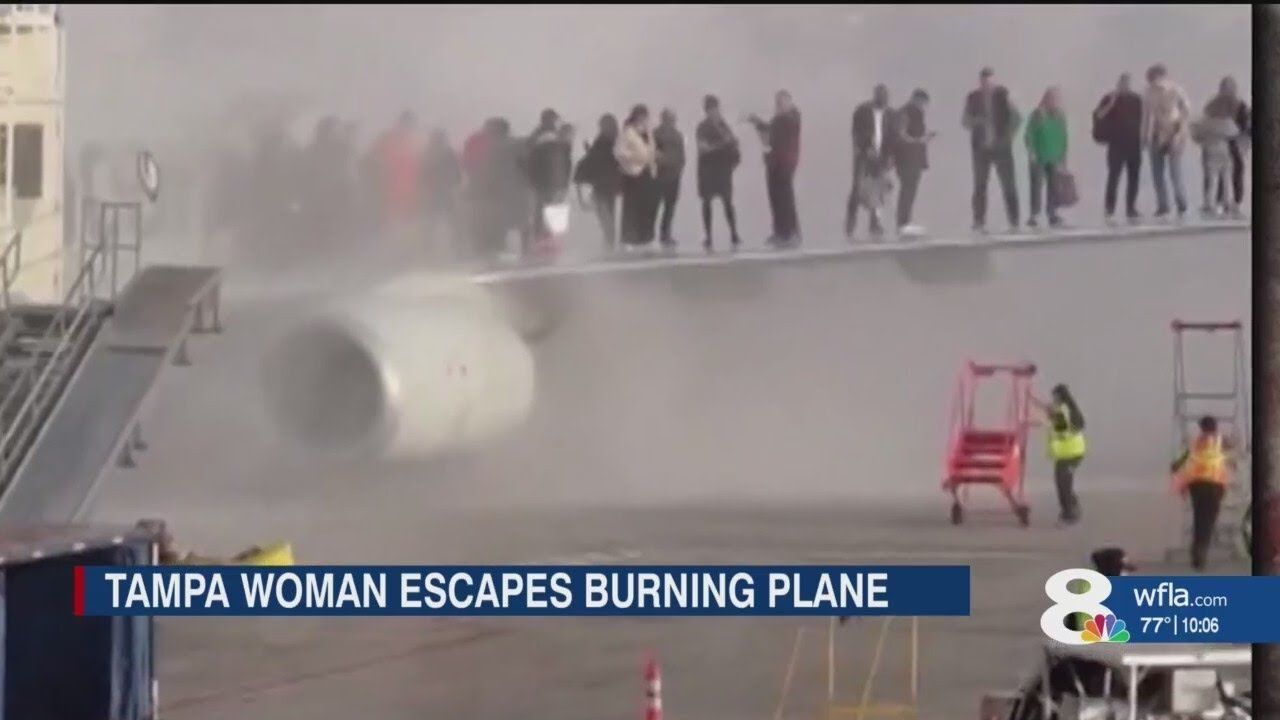
NTSB Final Report: Hiller UH-12E
Landed On Some “Substantially Sized Granite Rocks” Where The Skids Became Lodged In The Rocks
Location: Bonners Ferry, Idaho Accident Number: WPR24LA262
Date & Time: July 24, 2024, 07:30 Local Registration: N3375T
Aircraft: Hiller UH-12E Aircraft Damage: Substantial
Defining Event: Loss of control in flight Injuries: 3 None
Flight Conducted Under: Part 91: General aviation - Personal
Analysis: The pilot of the helicopter reported that with two passengers aboard, he approached a mountain lake to a hover above the water and saw the engine and rotor speed decrease to the green arc of the engine and rotor tachometer. He maneuvered the helicopter to the shore, and with the engine and rotor continuing to droop, he landed on some “substantially sized granite rocks” where the skids became lodged in the rocks. The helicopter then tipped forward and the main rotor blades impacted the rocks, which resulted in substantial damage to the main rotor and fuselage.
The pilot reported there were no mechanical malfunctions or failures with the helicopter that would have precluded normal operation. The pilot added that he did not verify the performance capability for an in-ground effect or a hover out of ground effect over water. The Helicopter Flying Handbook, FAA-H-8083-21B, states, “When hovering over surfaces as tall grass, trees, bushes, rough terrain, and water, maximum ground effect is reduced.”
Probable Cause and Findings: The National Transportation Safety Board determines the probable cause(s) of this accident to be -- The pilot’s improper selection of a landing site, which resulted in a main rotor strike. Contributing to the accident was the pilot’s improper performance planning and altitude selection over water, which resulted in an rpm droop.
FMI: www.ntsb.gov
NTSB Final Report: Aircraft Mfg & Development Co Ch 2000
The Pilot Stated That He Should Have Refueled Earlier In The Flight
Location: Ennis, Texas Accident Number: CEN25LA091
Date & Time: February 1, 2025, 22:30 Local Registration: N334LF
Aircraft: Aircraft Mfg & Development Co Ch 2000 Aircraft Damage: Substantial
Defining Event: Fuel exhaustion Injuries: 2 None
Flight Conducted Under: Part 91: General aviation - Personal
Analysis: After about 4 hours and 15 minutes of a cross-country flight, while approaching the final destination, the airplane ran out of fuel. The pilot attempted to divert to a closer airport but had to execute a forced landing to a grassy field. Upon landing the airplane sustained substantial damage to the fuselage above the right wing. Examination of the airplane at the accident site confirmed that there no usable fuel in the fuel tanks. The pilot stated that he should have refueled earlier in the flight, and that there were no mechanical malfunctions or failures with the airplane, engine, or related systems that would have precluded normal operations.
Probable Cause and Findings: The National Transportation Safety Board determines the probable cause(s) of this accident to be -- The pilot’s improper fuel planning which resulted in the total loss of engine power due to fuel exhaustion.
FMI: www.ntsb.gov
NTSB Final Report: Team Rocket F1
Airplane Bounced Slightly On Initial Touchdown, And It Drifted To The Right Of The Centerline
Location: Payson, Arizona Accident Number: ANC24LA028
Date & Time: April 14, 2024, 15:48 Local Registration: N75KM
Aircraft: Team Rocket F1 Aircraft Damage: Substantial
Defining Event: Abnormal runway contact Injuries: 2 None
Flight Conducted Under: Part 91: General aviation - Personal
Analysis: The pilot reported that, while landing with a left crosswind, the airplane bounced slightly on initial touchdown, and it drifted to the right of the centerline. The pilot applied left aileron and left rudder to correct for the veer and added engine power to abort the landing, but a gust of wind rolled the airplane to the right, and the right wing struck the runway. Subsequently, the pilot elected to land the airplane on the remaining portion of the runway.
During the second touchdown on the right side of the runway, the pilot said he lost directional control. The airplane travelled laterally across the runway surface and exited the left side of the runway, bending the right landing gear leg backward and the airplane nosed down. The airplane sustained substantial damage to the wings and engine mount tube structure.
The pilot reported that there were no preaccident mechanical failures or malfunctions with the airplane that would have precluded normal operation.
Probable Cause and Findings: The National Transportation Safety Board determines the probable cause(s) of this accident to be -- The pilot’s failure to maintain directional control while landing in gusting crosswind conditions.
FMI: www.ntsb.gov

Today in History
37 Years ago today: On 17 March 1988 Avianca flight 410, a Boeing 727, impacted El Espartillo Mountain after takeoff from Cúcuta Airport in Colombia. All 143 occupants were killed.
Date: Thursday 17 March 1988
Time: 13:17
Type: Boeing 727-21
Owner/operator: Avianca
Registration: HK-1716
MSN: 18999/240
Year of manufacture: 1966
Total airframe hrs: 43848 hours
Engine model: P&W JT8D-7A
Fatalities: Fatalities: 143 / Occupants: 143
Other fatalities: 0
Aircraft damage: Destroyed, written off
Category: Accident
Location: 25 km NW of Cúcuta-Camilo Daza Airport (CUC) - Colombia
Phase: En route
Nature: Passenger - Scheduled
Departure airport: Cúcuta-Camilo Daza Airport (CUC/SKCC)
Destination airport: Cartagena-Rafael Núñez Airport (CTG/SKCG)
Confidence Rating: Accident investigation report completed and information captured
Narrative:
Avianca flight 410, a Boeing 727, impacted El Espartillo Mountain after takeoff from Cúcuta Airport in Colombia. All 143 occupants were killed.
The aircraft, a Boeing 727-21 operated flight AV410 from Bucaramanga to Barranquilla, with en route stops at Cúcuta and Cartagena. Because the originally planned aircraft was not available, HK-1716 was prepared for the flight. This resulted in a departure delay of 2 hours and 30 minutes. The flight landed at Cúcuta at 12:28 local time.
At 13:06, the pilot requested clearance to start, but he was told there was a 10-minute delay because of three incoming aircraft.
The crew immediately requested clearance for a climb on course ("Why not clear us to climb on course to avoid delaying this flight further? We're: pretty far behind") and the tower granted their request at 13:08: "OK, cleared for engine start, climb on course VMC, report ready to taxi, temperature 28°".
This, added to the anomalous presence in the cockpit of another pilot whose loquaciousness continually disrupted the work of all the crew members, affected the way in which the pilot supervised the actions of his co-pilot, who was Pilot Flying. There was no crew briefing, nor did the pilot-in command give any instructions for the VMC departure.
Two minutes later the tower controller instructed them to taxi to runway 33.
At 13:12 the tower reported, "Cleared to Cartagena via Uniform Whisky 19, Whisky 7, Whisky 10, climb and maintain two six zero after takeoff, climb on course VMC, QNH ....correction transponder Alpha 2216". Take-off clearance was issued at 13:13.
The initial climb path followed the extended runway centre line to the inner marker, at which point the aircraft entered a continuous left turn. At 13:17 the pilot said to the copilot, "In any case, start turning right." Subsequently the aircraft struck the peak of El Espartillo at an elevation of 6,343 feet.
PROBABLE CAUSES:
1. Active:
A. Personnel factors - Pilot-in-command - Procedures, Regulations and instructions
a) Diverted attention from operation of aircraft and failed to exercise adequate and constant supervision over the performance of his co-pilot;
b) Tolerated inappropriate interference with cockpit discipline by authorized persons with access to the flight deck;
c) Continued VFR flight into IMC.
B. Personnel factor - Non-crew pilot in cockpit - Procedures, regulations and instructions
Interfered constantly with the normal operation of the aircraft, distracting the crew from the efficient execution of their duties.
2. Passive
A. Personnel factor- Crew- Procedures, regulations and instructions: lack of teamwork on the part of the crew, reflected in the failure to coordinate the instructions needed to take off and climb out in VMC using a profile established in accordance with the specific conditions.
B. Other factors - Meeting the schedule: The delays resulting from the change of aircraft for mechanical reasons contributed to the decision by the pilot-in-command to give inappropriate support to company priorities and request to depart, rather than waiting as recommended by the Control Tower, in order to avoid adding to the delays already experienced."

